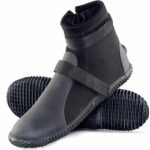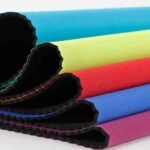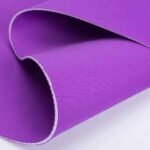Ever felt the chill of icy water steal your focus mid‑stroke, or struggled to stay dry when diving under waves? Choosing between a wetsuit and a drysuit can make or break your aquatic adventure.
A wetsuit uses neoprene insulation and body heat to trap a warm water layer next to skin, while a drysuit seals you completely away from water, relying on air or thermal undergarments for insulation. Your choice depends on water temperature, activity level, and comfort needs—ensuring safety and performance whether you’re free‑diving kelp forests or splashing in open‑water laps.
Last winter, I joined a hardy group training in 50°F lake water. Some swam in 5 mm wetsuits, others braved drysuits with fleece liners. By mile two, the wetsuit swimmers chatted happily about warmth, while the drysuit group stayed bone‑dry but bulked up—each camp swearing by their own gear. Ready to find your perfect match? Let’s dive in.
What Is the Difference Between a Wetsuit and a Drysuit?
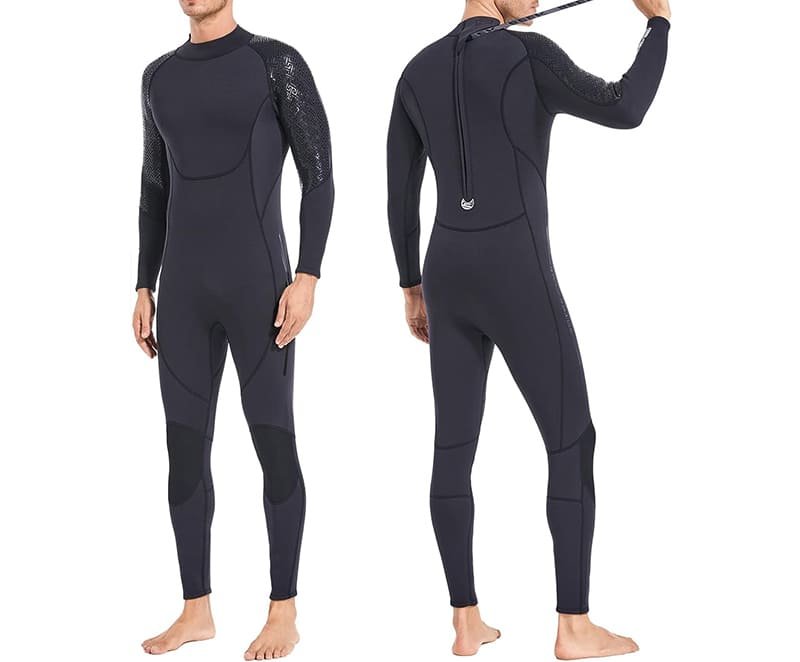
Wetsuits let a thin layer of water flush in and warm against your body, while drysuits keep you completely dry, using sealed seams and waterproof zippers plus insulating underlayers to trap body heat inside an air layer.
-
Thermal Mechanisms
- Wetsuit: Neoprene’s closed-cell foam traps micro-layers of water.
- Drysuit: Air layer between suit and undergarments insulates like a thermos.
-
Seam & Closure Technology
- Wetsuit: Flatlock vs. glued-and-blind-stitched seams—water entry vs. durability trade‑offs.
- Drysuit: Latex or neoprene seals at wrists/neck; waterproof zippers—risks of zipper failure.
-
Mobility & Fit
- Wetsuit: Snug, stretchy fit promotes hydrodynamics but can restrict movement.
- Drysuit: Looser to accommodate undergarments—bulk vs. freedom trade‑off.
-
Safety Profiles
- Wetsuit: Hypothermia risk if flushing too much water; buoyancy characteristics.
- Drysuit: Risk of inversion and uncontrolled ascent in diving; need for weight adjustments.
Is a Wetsuit or Drysuit Better for Swimming?
For active swimming in moderate temperatures (50–70°F), wetsuits offer streamlined flexibility and sufficient warmth; in colder water (<50°F) or longer immersion, drysuits with thermal undergarments provide superior protection and longer comfort.
-
Activity Level Considerations
- High‑intensity: Wetsuit’s thinner neoprene (2–3 mm) preferred.
- Low‑movement: Drysuit with fleece layers retains warmth when still.
-
Temperature Zones
Water Temp (°F) Recommended Gear Typical Neoprene/Underlayers 70–80 Shorty wetsuit (1–2 mm) N/A 60–70 Full wetsuit (3–5 mm) N/A 50–60 Thick wetsuit (5–7 mm) N/A <50 Drysuit + 1–2 layers Fleece, wool, synthetic insulation -
Performance Trade‑Offs
- Wetsuit: Better hydrodynamics, lower drag coefficient.
- Drysuit: Bulk adds drag; modern models use smooth‑skin neoprene shells to reduce resistance.
-
Cost vs. Benefit
- Wetsuits: \$100–\$400; lifespan ~2–3 years.
- Drysuits: \$800–\$2,000; multi‑year investment with replaceable seals.
Is It OK to Swim in a Wetsuit?
Yes—wetsuits are designed for swimming, offering thermal protection, buoyancy, and UV coverage. Proper fit and neoprene thickness ensure comfort, while minimal water flushing maintains warmth without overheating.
-
Safety Tips
- Avoid overheating: remove hood or unzip chest zip in warm water.
- Prevent over‑flushing: choose sealed seams in cold water.
-
Training Applications
- Triathlon: Specialized “swimskins” (0.5 mm neoprene) enhance speed but limit warmth.
- Open‑water practice: 3–5 mm suits balance warmth and flexibility.
-
Psychological Comfort
- Wetsuit’s snug fit reduces anxiety by improving buoyancy and feeling of support.
Can You Swim in a Drysuit?

Absolutely—but expect bulkier movement. Drysuits suit cold water or long immersion, using insulation layers under a waterproof shell. Practice buoyancy control, use weight belts appropriately, and ensure seals are snug to prevent water entry at neck and wrists.
-
Buoyancy Management
- Air volume control: Use low-pressure inflator and dump valves.
- Weight belt calibration: Achieve neutral buoyancy without over‑weighting.
-
Mobility Challenges
- Bulk: Restricts stroke amplitude; modern stretch‑nylon shells mitigate this.
- Underlayer compression: Thicker layers limit joint extension.
-
Use Cases
- Dive training, cold‑water open‑water crossings, winter triathlons.
-
Critical View
- Maintenance demands: zipper care, seal replacement costs vs. long‑term performance.
How Does a Wetsuit Keep You Warm in the Water?
Neoprene wetsuits trap a thin film of water next to the skin; body heat warms this layer, while closed‑cell foam neoprene provides insulation and buoyancy, minimizing heat loss through conduction and convection.
-
Neoprene Composition
- Closed‑cell foam made with nitrogen gas bubbles—thermal barrier.
- Thickness vs. flexibility: 2 mm panels in arms, 5 mm torso panels.
-
Seam Types & Flushing
- Flatlock: Breathable, cost‑effective; allows some flushing.
- Glued‑and‑Blind‑Stitched: Minimal water entry; higher cost.
-
Buoyancy Effects
- Neoprene density: 0.95 g/cm³; contributes ~1 kg buoyancy per 1 mm thickness per m² surface area.
How Does a Drysuit Keep You Dry and Insulated?
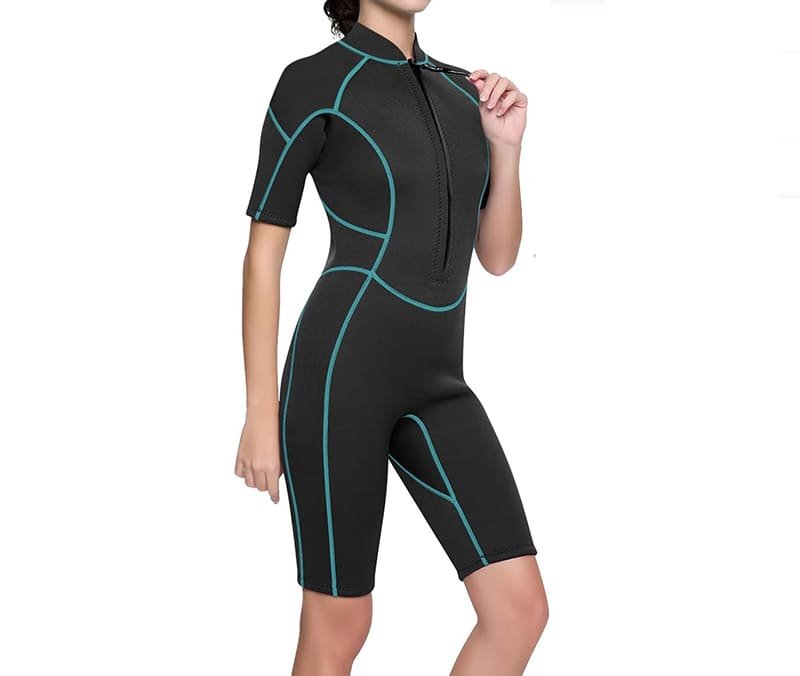
Drysuits seal out water entirely through waterproof membranes and tight seals, relying on trapped air and thermal undergarments—such as fleece or merino layers—to maintain body heat in cold water without any water contact with the skin.
-
Shell Materials
- Neoprene Drysuits: Built‑in neoprene shell + seals; inherent insulation.
- Membrane Drysuits: Trilaminate nylon/PVC/Kevlar layers; lightweight, packable.
-
Seal Technology
- Latex vs. neoprene wrist/neck seals—trade‑offs in comfort and durability.
- Latex requires periodic replacement (6–12 months).
-
Underlayer Choices
- Layering strategy: base (moisture wicking) + mid (fleece) + optional shell pants.
-
Critical Perspective
- Membrane suit breathability vs. susceptibility to punctures.
Which Suit Is Better for Different Water Temperatures?
For water above 60 °F, 3 mm wetsuits suffice; 50–60 °F favors 5–7 mm suits; below 50 °F, switch to drysuits with 1–3 thermal undergarments to stay warm and comfortable for extended swims.
-
Temperature Guide
Water Temp (°F) Wetsuit Type Drysuit Underlayers >70 Shorty (1–2 mm) None 60–70 Full (3–5 mm) Optional thermal top 50–60 Thick (5–7 mm) Fleece + base layer <50 N/A Base + fleece + shell -
Activity Duration
- Short swims: Wetsuit performance peaks; minimal heat loss.
- Long dives: Drysuit’s stable insulation wins out.
What Materials and Construction Methods Are Used in Wetsuits vs Drysuits?
Wetsuits use laminated neoprene with glued/blind‑stitched seams and smooth‑skin panels; drysuits employ neoprene shells or trilaminate membranes with taped seams, waterproof zippers, and wrist/neck seals—balancing durability, flexibility, and thermal performance.
-
Wetsuit Materials
- Neoprene Grades: S‑Flex, Yamamoto limestone neoprene.
- Outer Coatings: Nylon, spandex, or smooth‑skin for abrasion resistance.
-
Drysuit Materials
- Neoprene Drysuits: 5–7 mm neoprene with integrated seals.
- Trilaminate Membranes: Nylon/PVC/Kevlar layers laminated for lightness.
-
Seam & Closure Techniques
- Wetsuit: Taped seams in premium suits for zero flush.
- Drysuit: D‑ring zipper sliders, metal‑to‑metal corrodible components.
-
Critical View
- Environmental footprint: neoprene vs. synthetic membranes—emerging bio‑neoprene alternatives.
How Do You Choose the Right Suit for Your Swimming Activity?
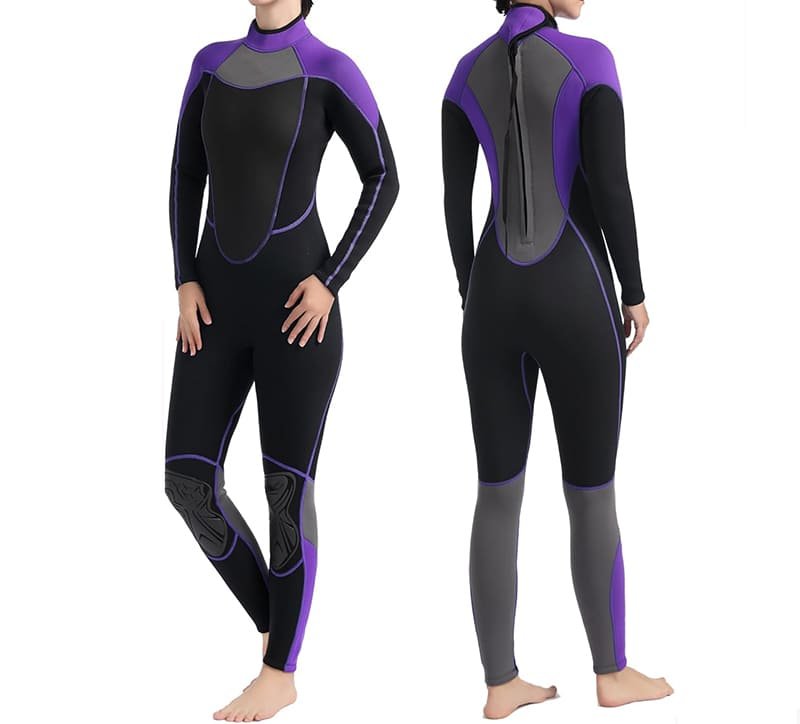
Match your suit to water temperature, swim intensity, and duration: lightweight wetsuits for speed, thick wetsuits for cold-water training, and drysuits for prolonged exposure or extremely cold conditions—balancing insulation, mobility, and budget.
-
Selection Matrix
Activity Type Recommended Gear Key Features Triathlon Racing 0.5–2 mm swimskin wetsuit Hydrodynamic, flexible panels Recreational Swimming 3–5 mm full wetsuit Comfort, warmth, moderate flex Cold‑Water Diving Drysuit + 2–3 layers Dry, consistent insulation Surfing 3–4 mm wetsuit with hood Durability, freedom for paddling Winter Open‑Water Swim Membrane drysuit + fleece Maximum warmth, dry comfort -
Budget Considerations
- Entry‑level wetsuits \$100–\$200 vs. premium \$400+
- Drysuits \$800–\$2,000—factor seal replacement costs
-
Fit & Sizing
- Wetsuit: Second‑skin fit; measure chest/height/weight
- Drysuit: Room for undergarments without trapping excess air
-
Critical Perspective
- Over‑specification traps: buying far more suit than needed
How Do You Care for and Maintain Your Wetsuit or Drysuit?
Rinse suits in fresh water, hang to air‑dry away from direct sun, lubricate drysuit zippers with silicone grease, store flat or on padded hangers, and inspect seams and seals before each use to extend lifespan.
-
Cleaning Routine
- Wetsuit: Mild wetsuit shampoo; avoid bleach or strong detergents.
- Drysuit: Rinse inside/out, dry fully before storage to prevent mold.
-
Drying & Storage
- Hang on wide hanger; avoid clips that crease neoprene.
- Store in cool, dark place—no attic or trunk.
-
Seal & Zipper Care
- Dry seals after each use; talc lightly to prevent sticking.
- Zip lubrication every 10 uses with approved grease.
-
Inspection Checklist
- Check neoprene for tears, delamination, or soft spots.
- Examine drysuit seals for cracks; replace annually.
-
Repair Tips
- Use neoprene cement for small wetsuit repairs.
- Drysuit seal patches and zipper gasket kits for DIY fixes.
-
Critical Takeaways
- Prevention vs. repair: investing in care saves replacement costs.
Conclusion & Call to Action
Both wetsuits and drysuits serve vital roles in swimming and water sports—each with unique thermal strategies, mobility profiles, and care demands. By understanding their differences, materials, and use cases, you can confidently pick the perfect suit for your next aquatic adventure.
Ready to customize your next wetsuit or drysuit? Szoneier offers free design consultation, sample provisions, and full logo customization to meet your exact specifications. Contact us today for a personalized quote and dive into comfort and performance!



